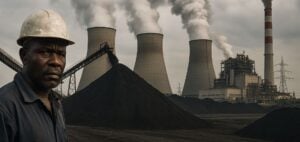Russia’s thermal coal exports climbed significantly in the period from May to July 2024.
This increase is being driven by growing demand in Asia-Pacific and the Mediterranean, where energy needs have intensified, not least due to heat waves that have exacerbated electricity consumption.
In response to these needs, Asian importers, including China, Japan and South Korea, increased their purchases of Russian coal, taking advantage of a temporary reduction in customs duties applied by the Russian government from May onwards.
In China, imports of Russian thermal coal continued to grow despite the reintroduction of a 6% tax on coal imports from countries without a free-trade agreement with Beijing, including Russia.
Mediterranean countries such as Turkey and Egypt also stepped up their imports, attracted by the competitive cost of Russian coal, even allowing for variations in market prices.
Logistical challenges and price fluctuations
Despite competitive Russian coal prices, exporters face persistent logistical constraints.
Russia’s heavily-used rail infrastructure is struggling to transport the necessary volumes to sea terminals in the North-West and Far East.
These logistical difficulties, coupled with high mine-to-port transport costs, have contributed to a reduction in the supply available for exports, leading to higher prices on the world market from the end of July.
The average FOB Baltic Russia coal price at 6,000 kcal/kg NAR thus fell to $69.20/tonne in May-July, compared with $97.40/tonne over the same period in 2023.
However, this fall has been partially offset by a recent rise in prices, due to tight supply and rising production costs.
Indian buyers, traditionally sensitive to price variations, have shown greater reluctance to source Russian coal, due to supply uncertainty and price volatility.
Outlook for the thermal coal market
Russian exporters continue to operate in an environment marked by international sanctions and increasing pressure on operating costs.
Nevertheless, global demand for thermal coal remains robust, underpinned by high energy requirements, particularly in the Asia-Pacific and Mediterranean regions.
The competitiveness of Russian coal prices, despite recent fluctuations, continues to attract buyers, although logistical constraints and production costs are increasing tensions on the market.
Developments in trade policies, both in Russia and internationally, will directly influence future trends in thermal coal exports.
Persistent logistical challenges and rising costs could limit Russian exporters’ ability to meet global demand, accentuating price volatility in the months ahead.




















